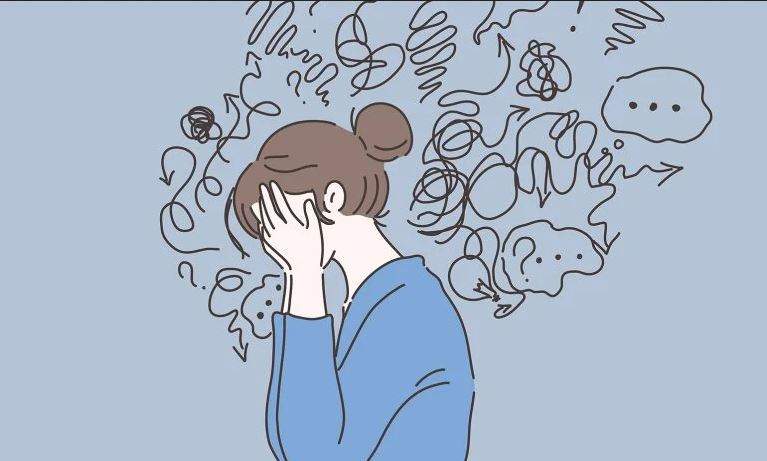6 Physical and Mental Symptoms of Anxiety Disorder

Anxiety disorder is a psychological condition. It shows Physical And Mental Symptoms differently for different people. You can say the symptoms vary from person to person so much. So that if anxiety brings flashes of blackness to one person, the other one could only feel a slight headache. However, some common symptoms can be identified by experts and professionals.
Some people have continued palpitations. Their heart beats faster as if they have been running for miles without any reasons. This sudden racing of the heartbeat is due to the anxiety disorder that can be triggered due to any reason, such as distress, fear, anger, or sadness.
What is Anxiety Disorder?
Anxiety has always been a part of humans’ flight, and the fight response triggered when they are afraid of something, either a new experience, tasting a new dish, or just visiting a new place. Anxiety is related to that affects the survival instincts of humans.
Humans have come a long way from living in the caves and fighting off the giants, animals, and mammals like mammoth and Siberian tigers, and the darkness of the human minds, but all that time, their anxiety kept their survival instincts alive. All types of anxiety are not bad for health; they can be used as a body response to the danger lurking in the surroundings. Those who are more attuned to their feelings and have a better understanding of their hearts and mind can use these changing feeling to understand their world around themselves.
However, when anxiety frequently affects thinking and feelings, then it becomes a problem for the person. Their day-to-day activities get affected, and they are left feeling blue and gloom, unable to act or perform properly due to the anxiety, then it comes a problem. It is called anxiety disorder or anxiety attack.
Symptoms of the Anxiety Attack:
As mentioned earlier the symptom varies according to person and their underlying health conditions, but some of the commonly observed symptoms of anxiety are:
- Mild to severe headache
- Body pain
- Increase in the heartbeat
- Uncontrollable body movements
- Jerking of hands and feet
- Panic Attacks
- Irritations and Restlessness
There are different types of anxiety attacks and disorders that can be triggered due to some specific reasons. Although some anxiety is triggered due to known reasons, here are some of the common anxiety disorders that you can readily find out and do something about to control whenever you feel triggered.
1. Agoraphobia
If you have come across intense feelings in which you were afraid to leave your comfort zone or the place you know to be quite safe for you, welcome to this unique anxiety disorder that triggers when you have thought of visiting a particular place or situation. Agoraphobia is the fear of going out or trying to go to a new place. Those who have this disorder may not want to interact with the public and have hard timing going out to crowded places. This attack leaves the person feeling anxious, uncomfortable, and restless in public. At times people have a hard time going out for days, months, and in extreme cases, for years.
2. GAD
GAD stands for the generalized anxiety disorder that makes the person constantly in anxiety and fear. This is worrisome and can cause multiple illnesses in the long run because worrying about too much for everything triggers stress and tension in the body, causing the body to be disturbed. This type of anxiety can be avoided by having conventional therapy sessions and medications. Being an uncalled worry and tension leads to physical discomforts as well, such as it can cause the upsetting of the stomach leading to stomach pain, insomnia, and various types of headaches.
3. OCD
You may have heard this name quite often from a lot of people saying that person has OCD. Is this some deadly disease? No, but it can be if it is left unchecked. OCD stands for Obsessive-Compulsive disorder that causes certain actions to be repetitive and cyclic. It triggers the person to continue doing the same things for several hours. Not only is this disturbing for the person, but they involve themselves in repetitive actions so that the anxiety can be reduced.
For example, some people are germs freaks, and they are afraid of touching anything that is publically used or touched by anyone else, so they keep cleaning. At times they think they have germs on their hands, or their hands are dirty. Therefore they keep washing their hands to the point of frustrations. Hence, it has got its name obsessive-compulsive disorder, as they cannot overcome their repetitive behaviors when triggered by anxiety.
4. Panic Attacks
Panic attacks can be uncalled, sudden, and disturbing. There are always some physical and mental symptoms that let the patient go through many difficulties. The patient becomes unable to breathe properly and has difficulty breathing due to shortness of breath. They get intense pain in the chest, causing them to lose sight of their surroundings; they get fearful as if something terrible will happen. They also have uncontrolled palpitations that increase their heartbeats. Most people have panic attacks in the examination hall, which causes them to go blank.
5. PTSD
This anxiety is often referred to as post-traumatic stress disorder, which is the triggered response due to the past trauma or any event that left deep physical or mental trauma. For example, some soldiers develop PTSD because of their involvement in the war. Similarly, those people who have experienced some terrible thing in their life such as physical or sexual assault, accidents, or natural disasters.
6. Separation Anxiety
Although this is commonly found in growing up children in-between age one to five, this is caused by unfortunate events when a child is separated from their parents at an early age due to any reason—death, divorce, change of environment, the birth of a new child, etc. Affordable Ghostwriting Services team member says that if this anxiety is left unchecked, it can cause mental trauma in the earlier life. The physical and mental symptoms are that a child loses interest in their daily activities, becomes aggressive, or quiet and shy.







